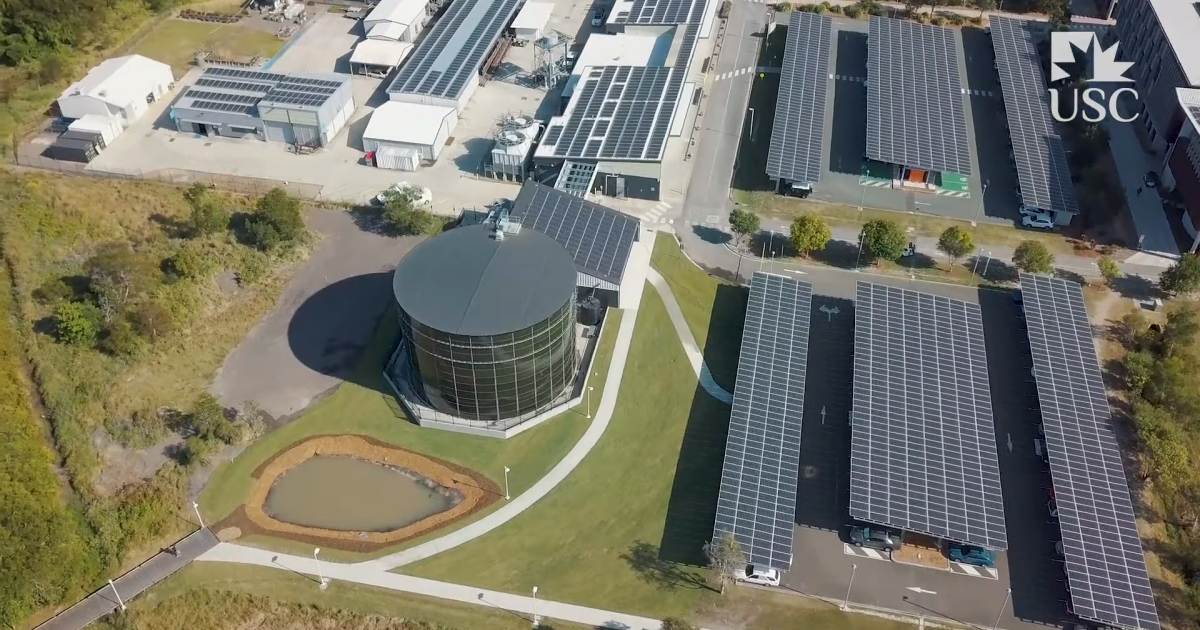
An innovative solar power and “water battery” system at University of the Sunshine Coast in Queensland has proven to be a winner for USC – and the environment.
Back in 2018, USC announced it would be installing thousands of solar panels and a giant water battery at its campus in Sippy Downs on the Sunshine Coast as part of its efforts toward achieving carbon neutrality by 2025. The University partnered with Veolia for the project, which saw more than 6,500 solar panels installed on rooftops and car park structures across campus along with a 4.5 megalitre water tank acting as a thermal energy storage device.
The 2.1-megawatt solar system produces energy used to cool water in the tank, which effectively acts as an eight-megawatt battery. The cooled water is used for air conditioning, which is the single biggest user of electricity at the campus (around 55%). The cooling network, which includes 1.6 kilometres of piping serving 15 buildings, has a peak flow rate of 140L/s in summer.
The project included construction of a plant room that also acts as a teaching and learning space for students, and the implementation of an advanced Building Management Control System (BMS), allowing real-time management of solar energy output.
The system, which features the first environmentally-friendly Hydrofluoroolefin ( HFO) refrigerant chillers used in Australia, went into operation in 2019.
System Performs Beyond Expectations
USC Vice-Chancellor and President Professor Helen Bartlett says in its first full year of operation, the system generated more than three million kilowatt-hours of solar electricity consumed on the Sunshine Coast campus – more than 34 percent of the total electricity required by the facility. An additional two million kilowatt-hours were exported to the mains grid.
According to Veolia Regional Energy Solutions Manager Andrew Darr, the system has surpassed its carbon reduction targets.
“The system has performed beyond expectation during its first year of operation and has attracted global attention for its innovative approach and environmental benefits,” Mr Darr said.
Among the attention and recognition was a Global District Energy Climate Awards win in 2019 and more recently a Denis Joseph Award for Innovative Use of Solar Energy in HVAC&R at the AIRAH Awards 2020
Over the 25-year life of the system, it is expected to avoid more than 100,000 tonnes of carbon dioxide emissions, reduce mains water consumption by more than 802,000 kilolitres and save the University an estimated $100 million.
Veolia will own, operate and maintain the system for 10 years, then ownership of the infrastructure will transfer to USC. USC is currently purchasing electricity and chilled water from Veolia, but even during the initial 10-year period it is expected to save $7.3 million. There was no upfront capital cost for the University as Veolia funded the build and implementation.
“USC is the first university in Australia to install a water battery powered by renewables, which is further proof that you don’t need to be in the big cities to do big things,” said Professor Bartlett.
More information on USC’s sustainability efforts can be viewed here.

 RSS - Posts
RSS - Posts



Speak Your Mind